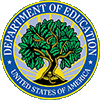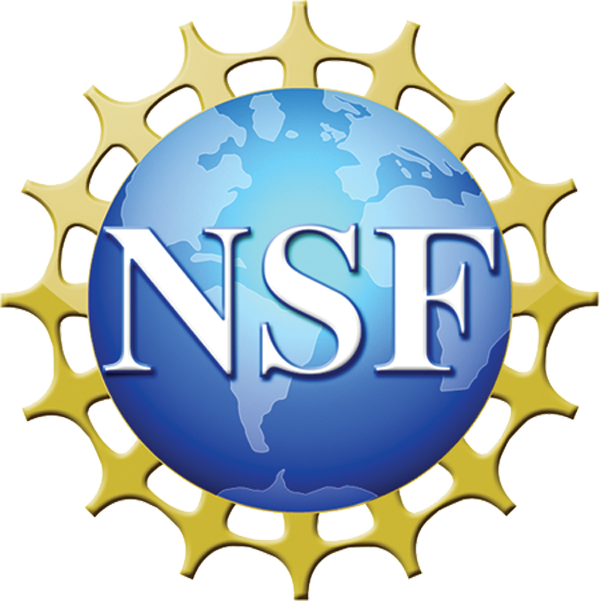 Contact
Us | Change
Text Size | Search
Site
Contact
Us | Change
Text Size | Search
Site Emergency Info Online, Fifth Edition
Next: Talking with Kids about Emergency Preparedness
Previous: National Prepardeness Month
IV. Get Involved
This September marks America’s fifth annual Emergency Preparedness Month, a yearly campaign designed by the Department of Homeland Security to educate citizens as to the importance of preparing for a possible disaster. At the core of this outreach program is a list of four simple actions that everyone should take in order to be prepared for an emergency: Get a Kit, Make a Plan, Stay Informed, Get Involved. This year Emergency Preparedness Online will be examining each of these four steps.
BE PREPARED:
Get Involved
By John Cavanagh and Anne Malia
Throughout the past few weeks, Emergency Preparedness Online has reviewed the cornerstone of disaster readiness: the kit, the plan, and the information. Anyone who has invested some time and energy into these three crucial elements of emergency planning is more competent, secure, and ready for any sudden crisis situation. That being said, there is still one way that you can take your preparedness standing to the next level: Get Involved. Bring your knowledge and experience to the community. Involvement is a pro-active approach that empowers you and all those whom you help. Getting involved means that you will not simply respond appropriately to an emergency situation, you will bolster your community so that it will be stronger and less vulnerable to the effects of a sudden disaster. Volunteerism is the key and there are many ways in which to volunteer.
The National Preparedness Coalition
Each September, the Department of Homeland Security encourages Americans to recognize National Preparedness Month by taking steps ready themselves for emergencies in their homes, businesses, and schools. Every year a wide range of public, private, and non-profit organizations volunteer to use the facilities at their disposal in order to help educate the general public about the importance of emergency preparedness. This National Preparedness Coalition hosts events, sponsors activities and provides information regarding the significance of disaster readiness in major cities and local communities throughout the United States. Last year the Coalition was nearly 1800 organizations strong. This year the Coalition consists of over 2500 members. This dynamic campaign educates a great number of people and stands as a perfect example of successful organization and companies investing their resources back into the very security of their country. If you are interested in signing your group up to be a National Preparedness Coalition member for this year, or next, visit http://ready.adcouncil.org/
The Citizen Corps
After 9/11 state and local government officials began to recognize the importance of citizens becoming a more active part of protecting the nation by supporting their local first responders. Officials have subsequently increased the opportunities for people to participate in preparedness, training, and citizen involvement in supporting emergency first responders. The Citizen Corps was created to help coordinate volunteer activities that will make our communities safer, stronger, and better prepared to respond to any emergency situation. Citizen Corps programs build on the successful efforts that are in place in many communities around the country to prevent crime and respond to emergencies. Citizen Corps asks Americans to embrace the personal responsibility to get training in first aid and emergency skills and to volunteer to support local emergency responders, disaster relief, and community safety. Currently there are over 2,300 Citizen Corp Councils that serve over 223 million people. This is grass roots action at its best. Pro-active, magnanimous, and undeniably American. If you are interested in joining these heroes, visit http://www.citizencorps.gov/
The Medical Reserve Corps
The successful Citizen Corps established a special component known as The Medical Reserve Corps (MRC). According to their website, “The mission of the MRC is specific and specialized; it is to establish teams of local volunteer medical and public health professionals who can contribute their skills and expertise throughout the year and during times of community need. The MRC primarily focuses on the skills of local volunteer medical and public health professionals to be used during times of emergencies or disasters. Sponsored by the Office of the Surgeon General, the MRC coordinates its efforts with several groups and has multiple affiliates. For more information, visit http://www.medicalreservecorps.gov/HomePage
The American Red Cross
Since its founding in 1881, the American Red Cross has been the nation's premier emergency response organization. Every year the Red Cross responds to more than 70,000 disasters. Volunteers make it happen, representing 96 percent of the Red Cross’ total work force! About 11 million Americans enlist the aid of the Red Cross in order to learn first aid, CPR, swimming, and other health and safety skills. Last year, more than 158,000 people volunteered to teach those courses. The Red Cross matches knowledge, skills, interests and experience of individual's with opportunities to serve their community. Many times people become overwhelmed at the thought of volunteering, assuming that they don’t possess the required level of skill or the necessary availability of time. In actuality, your local Red Cross chapter will work with you, whatever your schedule. Also, no special skills are required in order to volunteer. The Red Cross is currently looking for people with all kinds of different backgrounds, talents and skill levels. If you are looking for training, the Red Cross will provide it. For further information, visit http://www.redcross.org/services/volunteer/0,1082,0_325_,00.html
Community Emergency Response Teams
Community Emergency Response Teams (CERTs) are formed by members of a neighborhood or workplace who want to be better prepared for the hazards that threaten their communities. CERT programs currently serve in more than 170 communities nationwide. The program is based on this premise: If we can predict that emergency services will not meet immediate needs following a major disaster, and people will spontaneously volunteer, what can government do to prepare citizens for this eventuality?
- Present citizens the facts about what to expect following a major disaster in terms of immediate services.
- Give the message about their responsibility for mitigation and preparedness.
- Train them in needed life saving skills with emphasis on decision making skills, rescuer safety, and doing the greatest good for the greatest number.
- Organize teams so that they are an extension of first responder services offering immediate help to victims until professional services arrive.
The CERT training course is delivered in the community by a team of first responders who have the requisite knowledge and skills to instruct the sessions. It is suggested that the instructors complete a CERT Train-the-Trainer (TTT) conducted by their State Training Office for Emergency Management or the Emergency Management Institute in order to learn the training techniques that are used successfully by the Los Angeles Fire Department (which created CERT in 1985.) The CERT training for community groups is usually delivered in 2 1/2 hour sessions, one evening a week over a 7-week period. The training includes information regarding disaster preparedness, fire, medical operations, search and rescue operations, disaster psychology, and team organization. During each session participants are required to bring safety equipment (gloves, goggles, mask) and disaster supplies (bandages, flashlight, dressings) which will be used during the session. By doing this for each session, participants are building a disaster response kit of items that they will need during a disaster. For more information, visit https://www.citizencorps.gov/cert/index.shtm
About the Writers
John Cavanagh is Communications Director for Bridge Multimedia and Chief Researcher for Emergency Information Online.
Anne Malia writes about technology and emergency preparedness for people with special needs and has contributed to the production of EmergencyPrepOnline.org and EdTechOnline.org.
Article inquiries welcome. On request, we can provide feature-length articles tailored to your audience and requirements. Please contact John Cavanagh at Bridge Multimedia: (212) 213-3740 or jcavanagh@bridgemultimedia.com.
Previous: National Prepardeness Month
Return to top of page

